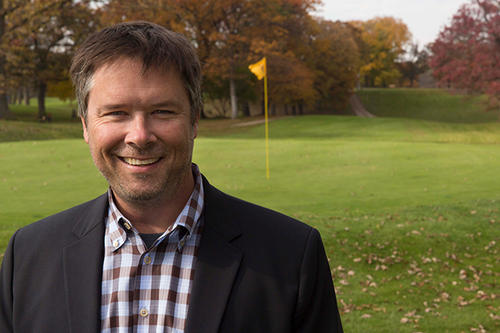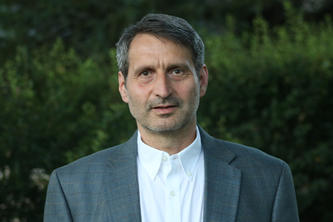
The University of Minnesota is a leader in developing solutions to difficult problems. The United States Golf Association (USGA) oversees a sport that has entertained millions of participants for more than 120 years, but finds itself at a crossroads. Now the two organizations are joining forces in a unique collaboration.
On Nov. 2, the U of M and the USGA announced a five-year research partnership designed to address golf’s present and future challenges, and one that stands to benefit our public green spaces, as well.
The partnership leverages U expertise across a wide range of disciplines, and will involve the College of Food, Agricultural and Natural Resource Sciences, College of Science and Engineering, Carlson School of Management, and the Humphrey School of Public Affairs.
The USGA is looking to address the game’s cost, the time it takes to play, and golfer enjoyment, but the partnership will also delve into many other topics such as types of grass, water consumption, irrigation practices, community and economic impact, and participation behavior.
The U brings to the table 30-plus years of turfgrass research related to golf, conducted on campus and at courses near and far. “We’re connecting ideas and concepts that will drive golf to be sustainable into the future,” says Brian Horgan, horticultural science professor and Extension turfgrass specialist, who started the Science of (the) Green® initiative and is leading this collaboration.
The partnership will utilize the U’s Les Bolstad Golf Course as “a living, learning laboratory” to support critical research projects, as well as an outdoor classroom for demonstrating best practices in course design, maintenance, and operations.
Down the road, Horgan envisions that the research focused on golf courses right now will translate to parks and other urban green spaces. “Grass is the connection of people to plants as more people move into cities. Golf courses are just an extension of that,” Horgan says. “It’s an engineered system that needs a little bit of fine tuning.”
Adds Horgan: “Everybody that’s a part of the program is excited because we’ve had this sustainability mission [since 2001], and now it’s materializing into a partnership with the leading golf organization in the world.”
- Categories:
- Science and Technology





